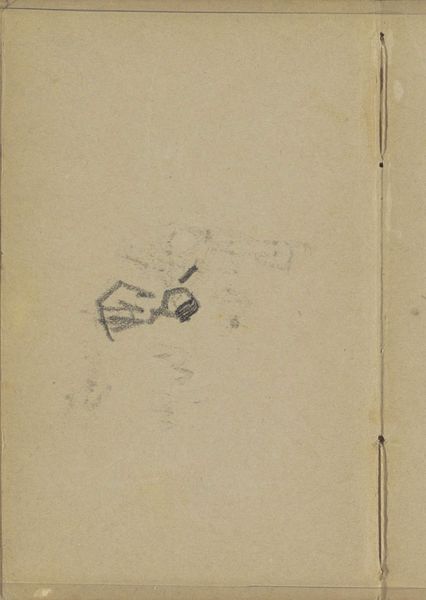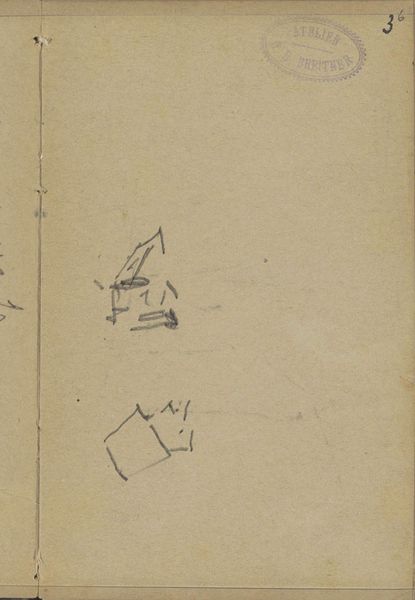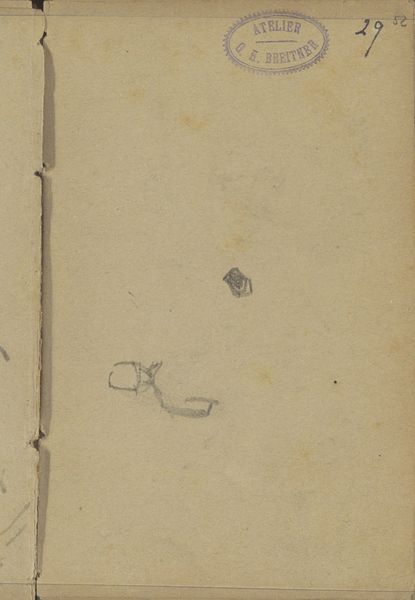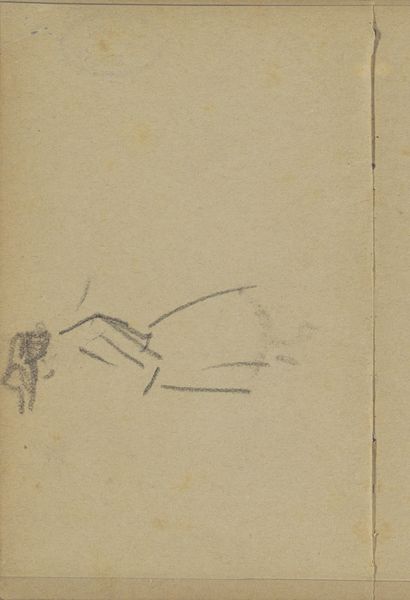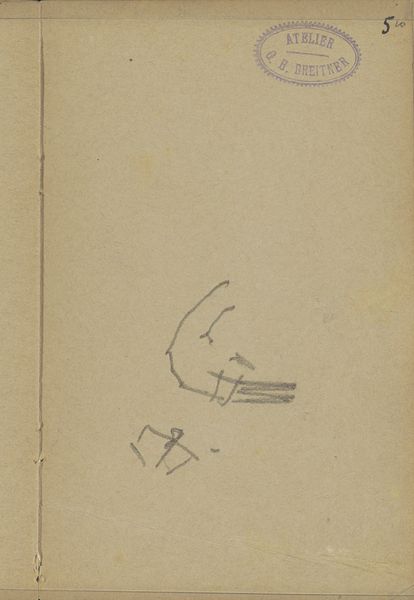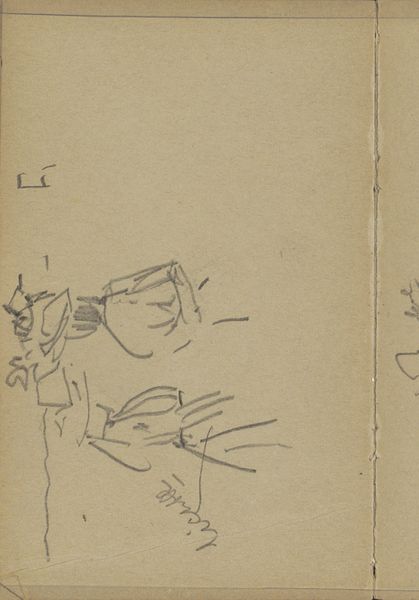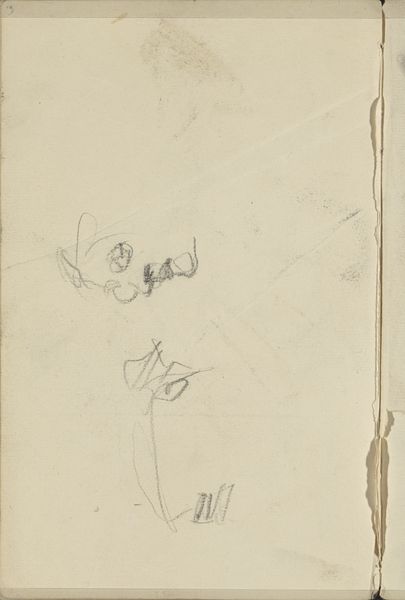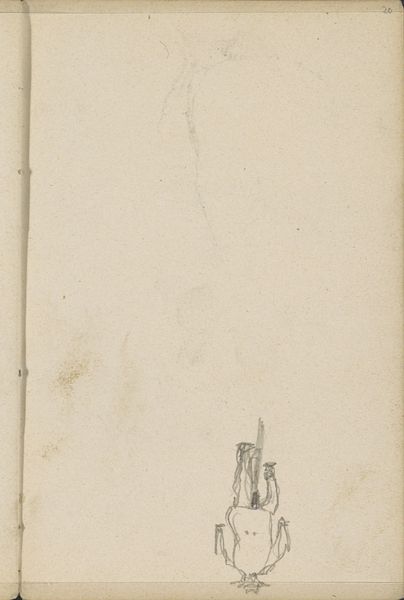
drawing, pencil
#
drawing
#
aged paper
#
light pencil work
#
impressionism
#
sketch book
#
hand drawn type
#
landscape
#
personal sketchbook
#
idea generation sketch
#
sketchwork
#
pencil
#
sketchbook drawing
#
storyboard and sketchbook work
#
sketchbook art
Copyright: Rijks Museum: Open Domain
Curator: Well, here we have George Hendrik Breitner’s "Studie," created between 1887 and 1891. It’s a pencil drawing, part of the Rijksmuseum’s collection. Editor: It’s a delicate work, almost ephemeral. It looks like a page torn from a sketchbook, aged paper with these fleeting impressions captured in pencil. What strikes you about this piece? Curator: The means of production immediately draw my attention. The intimacy of the sketchbook – its physical presence as a tool for generating ideas – speaks volumes. Breitner, known for capturing Amsterdam's gritty street life, seems to be experimenting here. Do you think this preparatory process influenced his larger, more 'finished' works? How does the accessibility of pencil and paper, these fundamental materials, democratize the artistic process, allowing for rapid sketching and the exploration of form without the pressure of a final masterpiece? Editor: That's a great point. It makes you consider the labor involved, even in what seems like a quick sketch. Does the material condition – the readily available and inexpensive nature of pencil and paper – affect the perceived value or importance of such works? Curator: Absolutely! Think about the contrast between these readily available materials and the labor they enable, compared to the preciousness often associated with oil paintings and grand canvases. Where does the 'art' reside? Is it solely in the final, polished product, or equally, perhaps more powerfully, in the iterative, messy process captured here? We have to consider that Breitner was also a street photographer capturing the everyday lives of the working class, then printing in albumen. Are those albumen prints or these sketchbook pages the 'real' artwork for consumption, the commodity, the thing? What do we even mean by art if the means of production challenges notions of permanence? Editor: This makes me appreciate the ‘Studie’ even more. I hadn’t thought of it that way. Thank you! Curator: And thank you. Thinking about art through the lens of production and material certainly shakes things up.
Comments
No comments
Be the first to comment and join the conversation on the ultimate creative platform.
